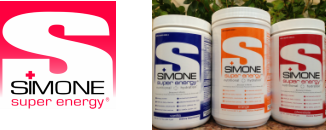5/19/16
We do not diagnose disease or recommend a dietary supplement for the treatment of disease. You should share this information with your physician who can determine what nutrition, disease and injury treatment regimen is best for you. You can search this site or the web for topics of interest that I may have written (use Dr Simone and topic).
“We provide truthful information without emotion or influence from the medical establishment, pharmaceutical industry, national organizations, special interest groups or government agencies.” Charles B Simone, M.MS., M.D.
BIG PHARMA AND FEDS BLOCKS GENERIC CANCER DRUGS
Lawrenceville, NJ (Dr Simone) – The high cost of cancer drugs is unsustainable and is a real threat to our health care system. The price of a new drug can exceed $100,000 per year or course of treatment, and this high price does not confer any more substantial benefit to the patient.
One solution is for Medicare to reimburse only for the less expensive drug(s) if it confers the same benefit regarding survival, etc. For example, the outcome of treating lung cancer for 12 weeks using carboplatin + paclitaxel + bevacizumab for $30,225 is the same as using cisplatin + gemcitabine for $440.
[ http://jama.jamanetwork.com/article.aspx?articleID=2521323#jvp160062t1 ].
Another solution is to make cancer generic drugs more affordable and get them more quickly to market. The Hatch-Waxman Act of 1984 allows generic manufacturers to file an Abbreviated New Drug Application that allows quicker FDA approval of a generic drug. But despite this, one in five cancer patients do not fill their prescriptions due to the high cost because Big Pharma uses two strategies to delay or prevent the availability of affordable generic cancer treatment drugs from entering the market, thus creating a monopoly for a longer time. And when a generic drug does enter the market, the cost is almost the same as the branded drug. And don’t look to the media to expose this. Big Pharma pays the media for advertisements.
Pay-for-Delay
The Big Pharma patent holder has confidential agreements with and pays manufacturers of potential generic competitors to delay the generic drug from entering the market.
Example: Novartis paid Sun Pharmaceuticals not to release its generic version of Gleevec for 6 months. Then the generic version had 180 day exclusivity in the US that allowed these two companies to dictate the price for another 6 months. The yearly cost of Gleevec is $130,000 and the generic version is $90,000 which is what the brand cost two years ago. This single year added $3 billion to Big Pharma’s bank accounts.
The Federal Trade Commission estimates that Pay-for-Delay settlements cost taxpayers, consumers, and insurance companies about $3.5 billion a year. The U.S. Supreme Court and state Supreme Courts have indicated that Pay-for-Delay could violate antitrust laws.
Product Hopping
When a drug’s patent is about to expire, the company will make only minor changes (dose, when to take it, or inconsequential chemical change) to it that constitute a “new drug” that do not improve the efficacy or reduce toxicity. They get another 20 year patent, sell the “new drug” for an equivalent price, encourage physicians to switch their patients to the “new drug,” and then remove the old drug before the patent on it expires.
Example: Abbott Laboratories product hopped with several forms of fenofibrate that cost the U.S. health care system $700 million a year.
Feds Protect Big Pharma by Stopping Cross-Border Importation
With 6 lobbyists for every elected representative, Big Pharma has successfully blocked the importation of generic drugs with Section 708 of the FDA Safety and Innovation Act. The allegation is not true that imported generics are dangerous even though they are made by reputable and approved generic manufacturers.
Example: Americans are forced to buy American generic Gleevec for $90,000 a year versus only $8,000 (eight thousand) a year from Canada.
[ http://www.bloodjournal.org/content/early/2016/01/26/blood-2015-11-680058?sso-checked=true ]
(c) 2017 Charles B. Simone, M.MS., M.D.



